Sigma A 35 mm f/1.4 DG HSM
3. Build quality
In the photo below you can see a comparison between the dimensions of the Sigma A 35 mm f/1.4 DG HSM, the Sigma 1.4/30 for smaller sensors and the Nikkor 24-70 mm f/2.8.
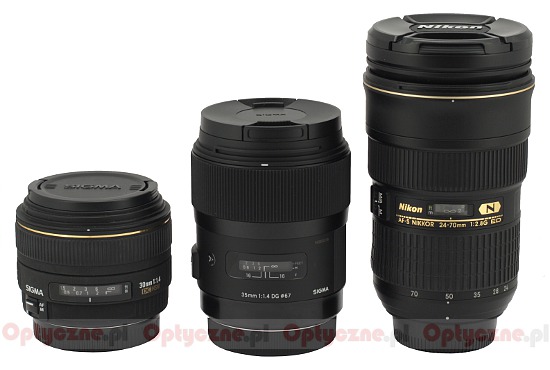 |
Please Support UsIf you enjoy our reviews and articles, and you want us to continue our work please, support our website by donating through PayPal. The funds are going to be used for paying our editorial team, renting servers, and equipping our testing studio; only that way we will be able to continue providing you interesting content for free. |
- - - - - - - - - - - - - - - - - - - - - - - - - - - - - - - - - - - - - - - - - - - - - - - -
The tested lens starts with a metal mount which surrounds contacts and a rear element, 32 mm in diameter. The rear element is mobile. It is situated on the same level as the mount with the focus set at infinity and it hides about 1 cm inside the barrel when you pass to the minimum focusing distance – then you can notice a slight crack inside the mount, with visible electronic elements of the lens. It means you can forget that this device is dust proof; dirt can get inside it without any problem. The front element for a change remains immobile which means that the optical system and the focal length shift during focusing.
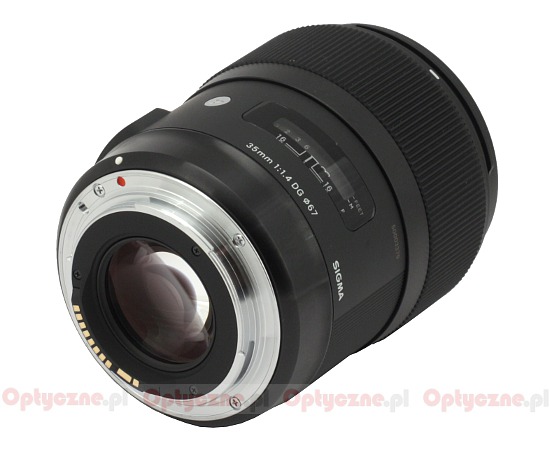 |
The proper casing of the lens starts with a smooth, black, metal ring on which you can find a white dot, making the alignment to a body easier. Further on you see the name and the parameters of the lens above which there is a distance scale behind a window, expressed in feet and meters. Below there is a distance scale but just for f/16 aperture so not especially useful. On the left side of the scale you can find an “A” symbol meaning that this device belongs to the “Art” group, an inscription “MADE IN JAPAN” and a focusing mechanism mode switch (AF/MF).
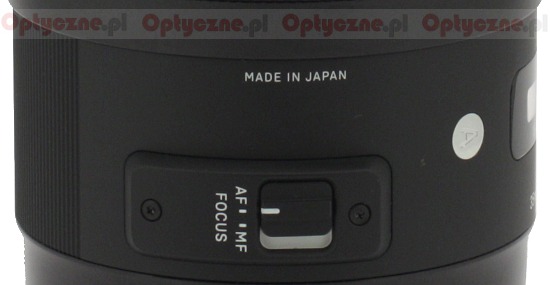 |
The next element is a huge manual focus ring, as wide as 3.5 cm. Most of it occupy comfortable rubber ribs. The ring works smoothly and is well-damped. It is a pity, though, that running through the whole scale takes just a turn through 90 degrees. As it is a quite fast device a bit wider scale, allowing you more precise settings, would be appreciated. For comparison’s sake the Nikkor’s 1.4/35 whole scale reached 120 degrees.
Immediately behind the manual focus ring you can find a hood mount. It surrounds a non-rotating filter thread, 67 mm in diameter, which goes round the front element, 48 mm in diameter.
The optical construction scheme is really impressing – it’s enough you glance at a picture below.
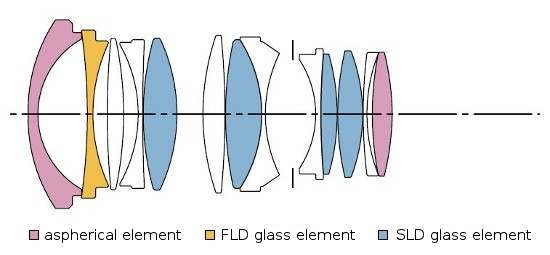 |
The Sigma is optically the most complex 1.4/35 lens on the market. It consists of 13 elements positioned in 11 groups. A high number of special elements is also impressive: we deal here with two aspherical elements, as many as four low dispersion SLD glass elements, one FLD element, made of glass which properties are similar to fluorite. Inside there is also a circular aperture with nine blades which can be closed down to a value of f/16.
Buyers get both caps, a hard case and a petal-type hood.
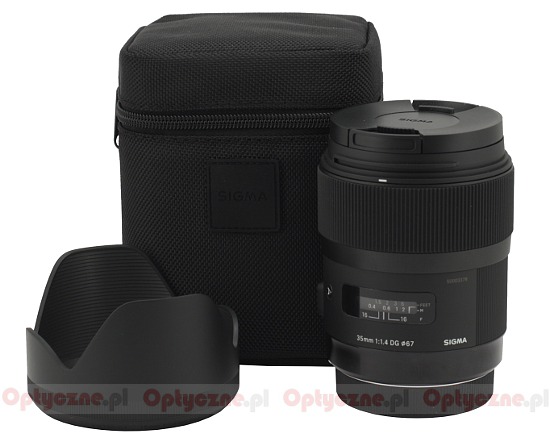 |
With the change of the nomenclature and casings of Sigma lenses, the producers changed the caps as well – both the front and the rear one. What’s more, as you can notice in a photo below, the packaging is different as well, no longer black but almost entirely white. Unfortunately the sticky label on the box proves that not all these changes were positive ones. The Sigma 1.4/35 is supposed to be a top-of-the-range device, which, according to the old system, would belong to the EX class. After all such are the 1.4/50 model (cheaper than the 35 mm one) and the 1.4/85 one (just a tad more expensive). They come with a three-year warranty period, with a possibility to prolong it to five years. What’s very strange, the new Sigma 1.4/35 comes with just a two-year warranty, with a possibility to prolong it by another year. Such are the conditions you get buying the cheapest Sigma instruments. It is not perhaps the best move when it comes to the image of the company; it suggests that you deal here with something worse and less durable than in the case of the EX 1.4/50 and the EX 1.4/85 lenses - at least I understand it in such a way…
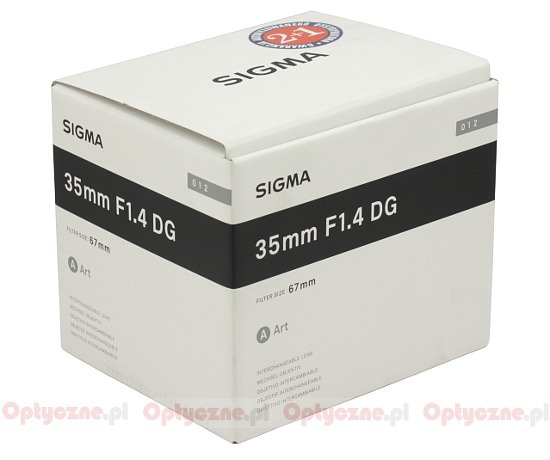 |






